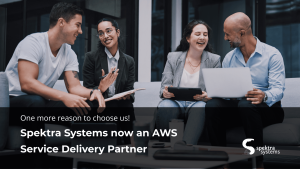Do you have a growth focus for your 2022 plans and vision for your CSP business? If you are nodding yes, then you have landed at the right place. The rise of remote work and greater digital disruption has been accelerating cloud adoption for most enterprises. As more and more enterprises move their operations and workloads to the cloud, their demand for CSPs like you is bound to increase. Invariably, this spells out unparalleled opportunities for you to grow and expand.
However, growth cannot be achieved simply by hoping for it. With an increase in demand, there has also been a simultaneous rise in competition in the CSP space. Therefore, you need to acknowledge and leverage the Microsoft cloud solution provider ecosystem to stay a step ahead. Based on our experience of working with CSPs globally, being an active participant in their growth and years of expertise that we bring in the cloud space, we believe that there are certain components which can enable CSPs to unlock their complete potential. We have been able to identify six key steps or practices that CSPs can adopt to facilitate sustainable and scalable growth.
You need to be cognizant of the fact that simply adding more members to the team or investing in random plans for stepping up your business efforts will not yield the impact you desire. Rather, you need to adopt a focused and results driven approach towards business growth. Ad-hoc or measures which are not well thought through might enable you to onboard several customers and see a temporary jump. However, unless those practices can be continued over time, you will end up losing customers. Therefore, you need to adopt steps that will facilitate incremental growth that can be sustained and scaled over the years to create a legacy for your business.
Through the course of this blog, we will take you through six major practices that will enable you to leverage the Microsoft cloud provider ecosystem. Furthermore, we will help you understand some common pitfalls that you should avoid.
Deliver result-oriented solutions
You need to reflect on your thought process whenever you add a solution, an offer, or a new feature to your business. Try to understand how it will impact your customers. Simply adding features without understanding their use case is not likely to facilitate your growth. Therefore, the first step towards sustainable CSP business growth is to start building solutions that solve real customer problems. Try to understand the challenges your customers are facing at different levels. A comprehensive problem analysis will help you gauge where you can intervene with the right solution.
For instance, if you have partnered with a fast-growing organization, their license and subscription requirements are bound to be dynamic. They might need to add or reduce subscriptions on the go without waiting on partner to approve and purchase on their behalf. Along with that, they may functional consultants to help them implement the licenses & products as problem solving solutions and want dedicated point of support for advisory, consulting and support. The result-oriented solution that the customer seek here is a partner who can be their one-stop shop for all needs on whom they can rely for all their cloud infrastructure & software requirements.
Thus, for sustainable growth, you need to comprehensively reflect on what are the major challenges your customers are facing and build solutions for the same. Interactions with the customers, market research and surveys can help you get a fair understanding of the pain points that you need to address.
Adopt a customer first approach
Once you are able to customize your solutions to address the pain points of the customers, it is important to ensure a great experience to enable your customers to reap the benefits of the solution. One of your key focus areas should be building an unparalleled customer experience. In the absence of such an experience, no matter how competent or exemplary your offerings are, you will be unable to achieve sustainable growth. The idea is simple, customer experience is the foundation of customer stickiness and loyalty which actually translates to impact on the bottom line and business growth.
Since your business is positioned in a way that seeks to make your customer’s journey for cloud adoption seamless, exceptional experience is very important to maintain that. To adopt a customer first approach for business growth, you first need to get an in-depth understanding of the various milestones for a customer lifecycle. Right from onboarding to repeat sales and transactions, there are several touch points where you and your team will engage with the customer. Your focus should be on ensuring that each touch point provides a seamless experience for your customers. While great experience begins with ensuring the customer has access to best in class features that you have to offer, it further augments if leveraging those features comes without friction.
Let’s continue with the example from above. Suppose you have the right capabilities and technology infrastructure in place to enable your customers to scale up and down their licenses based on their needs. However, if your customers have to be dependent on your support to make this change every time, it is likely to bring down the experience. Here, promoting a self-service experience which gives your customers a sense of control and empowers them can lead to a great experience. Therefore, sustainable growth occurs when your existing customers come back to you, increase their business as well as spread the word. In fact, having loyal customers over the years is one of the top ways to create credibility and foster sustainable growth.
Fix underlying issues
In addition to the right offerings and customer experience, you need to reflect on your CSP business as a whole. Start with identifying any specific challenges that you, your leaders or team members might be facing and focus on addressing those as well. While you may be occupied with building result driven solutions to address customer challenges, to be a competent partner, you need to internally understand any obstacles in your way too.
Let’s take a quick example here, you may have arrived on the conclusion to facilitate self-service for your customers, however, you might lack the capabilities and resources in house to achieve the same. Similarly, your team might be under a lot of administrative burden, unable to achieve customer success levels that it should. In both these situations, acknowledging the problem and identifying areas for strategic partnership is critical.
Here, you might want to explore strategic partnership with a cloud automation platform like CSP Control Center or C3. This collaboration or partnership can power your processes with cloud automation to take care of your invoicing, self-service needs, create custom offers and much more. Similarly, there can be other avenues where you can explore other relationships or partnerships to promote sustainable growth. The objective is to identify areas for strategic partnership where additional support can accelerate your growth journey.
Focus on upskilling
The above three steps for sustainable CSP growth are more on an organizational and structural level. However, for unparalleled growth, you need to focus equally on one of your biggest assets, your workforce, or your human capital. You need to acknowledge that the skill sets, requirements as well as the expectations of the workforce are constantly changing. Unless you invest in the upskilling of your workforce, they will find themselves ill-equipped to address the dynamic expectations of your customers.
Upskilling also becomes more important with the rise of technological advances. As you seek to survive and thrive in the cloud industry, your human capital must be up to date on the latest trends and digital skills. Now, there are multiple facets to this notion.
First, you should focus on investing in right learning paths and certifications for your human capital. With the right certifications and courses, your workforce will be able to capitalize on the entire solution area even better. These certifications will enable them to augment their capabilities and understand what they are doing better, resulting in better performance. Second, you need to identify development needs and skill requirements for different roles and responsibilities and ensure consequent upskilling. The objective is to focus on their learning path and help them achieve an exponential learning curve. For instance, your sales team might need to adapt to a pattern of completely virtual selling, keeping pace with the new normal. Similarly, your marketing team must be well versed with the toolkits and marketing resources that Microsoft offers for partner success. Invariably, the idea here is that the more competent and skilled your workforce will be, the greater will be the productivity leading to better business outcomes. Thus, when you invest in human capital upskilling, you are setting the stage for sustainable business growth.
Identify avenues for expansion
It is extremely important to take a holistic view of what sustainable growth entails. While increase in revenue is a direct answer, there are several other components that point to growth. One of the top ones being expansion to new markets. This expansion can augment your global footprint by entering new countries with your products/services/specializations. Alternatively, you can focus on regional expansion by adding more regions to your spread within the same country. Eventually, geographical expansion will result in revenue increase as well, closing your sustainable growth loop.
However, expansion just for the sake of having a greater presence will not be able to support your growth ambitions. Each expansion vision must be backed by strong market research and evidence that supports it. Be sure to analyze and evaluate each market before entering the same, else your expansion may not result in growth. Market analysis and evaluation from a CSP standpoint entails a few important aspects.
First, you need to do a customer study. The idea is to understand whether or not there is a need for a product or offering like yours. For instance, if there is a particular country which doesn’t have a high degree of cloud adoption, their need for CSPs will be rather limited. Thus, you need to choose a market which is mature when it comes to cloud adoption. Second, undertake a competitor mapping. You need to be sure that the market is not already over saturated. If there are limited customers, but numerous CSPs, entering it may not be the wisest move. It might be a good idea to explore countries or regions where cloud adoption is gradually improving and the number of CSP players are limited. It is quite clear that if you enter a new market and expand strategically, you can fast-track your path towards sustainable growth.
Strive to update and upgrade
We have reached the final step towards sustainable growth. Here, you need to focus on striving to update, upgrade and provide something better to your customers. It is common knowledge that there is always a better and improved version of the solution that you can offer to your customers. You might start or offer a solution at a basic level, however, there is always scope to refine it further. It is important to be cognizant of the changing business requirements of your customers and align your solutions. Research, showcase and try to deliver the best solution always.
While you may have some extraordinary capabilities to begin with, as you achieve a core customer base, you should experiment with adding new features or updating the existing ones. There are several reasons that updating and upgrading can add to sustainable growth. First, when you keep updating and upgrading, you are aware about the latest market trends and are able to position your CSP unique selling proposition in the best way possible. Second, you will come across as an agile and customer centric partner that updates itself to keep pace with the changing market ecosystem and customer demands. Third, you will find yourself in a better place to leverage the latest advancements in the market to add to your productivity, performance, and efficiency.
Thus, a focus on constantly improving your CSP business by updating and upgrading is crucial for sustainable growth. It will enable you to unlock new ways of creating and generating value by innovating what you offer as well as how you offer it.
Common growth pitfalls
While you have a fair understanding of how you can achieve sustainable growth for your CSP business, it is very important to be cognizant of the common pitfalls that CSPs face. The following can be major roadblocks in your growth journey and therefore, you must address them, preferably even before they surface:
- Being too ambitious: You might want to adopt all steps for sustainable growth at once. However, make sure that you adopt an incremental approach and facilitate growth in a phased manner. Give time to each growth parameter to show its result.
- Underestimating scope: This pitfall is most common when it comes to expansion. You need to ensure that you have all the right resources when you embark on the expansion journey. Make sure you do a comprehensive study and analysis before expanding in terms of capital, human resources, capabilities, etc.
- Being ill-equipped: Many CSPs claim that while they were able to achieve unparalleled growth with an increase in customer base, greater revenue channels, expansion, etc., they found themselves ill-equipped to handle the sudden surge. Therefore, you need to make sure that you have adequate human resources to handle new customers, technological support to provide the expected features, etc.
- Adopting a siloed approach: Sustainable growth is an organization-wide agenda. You cannot expect your CSP business to grow with the support of a single team. Ensure that everyone in your organization adopts a growth mindset and attitude.
- Neglecting partnerships: Finally, if you try to do everything on your own, you are likely to only reach a certain level. It is best to identify strategic partnerships with those who are expert in certain fields and explore mutual synergies. Leveraging the same can enable your workforce to focus on what matters most, customer success.
CSP Control Center: Your Growth Partner
Over the years, C3 has been a growth enabler for multiple CSP Partners and has facilitated their expansion, revenue growth and much more. As a leading cloud automation platform, C3 enables CSPs to eliminate administrative overheads for their employees, provide self service capabilities, leverage integrations, provide customer offers and discounts and much more. Here are a few ways CSP can power your growth journey:
- Identify customer problems with deep industry understanding
- Co-create result driven solutions
- Provide empowering customer experience with automation and self service
- Facilitate streamlined sales with offers and bundles
- Reduce inaccuracies and errors in invoicing and revenue leakage
Start your journey towards sustainable growth today with C3 and unlock your potential to become a leader in your space.
This blog was originally published on CSP Control Centre.




















